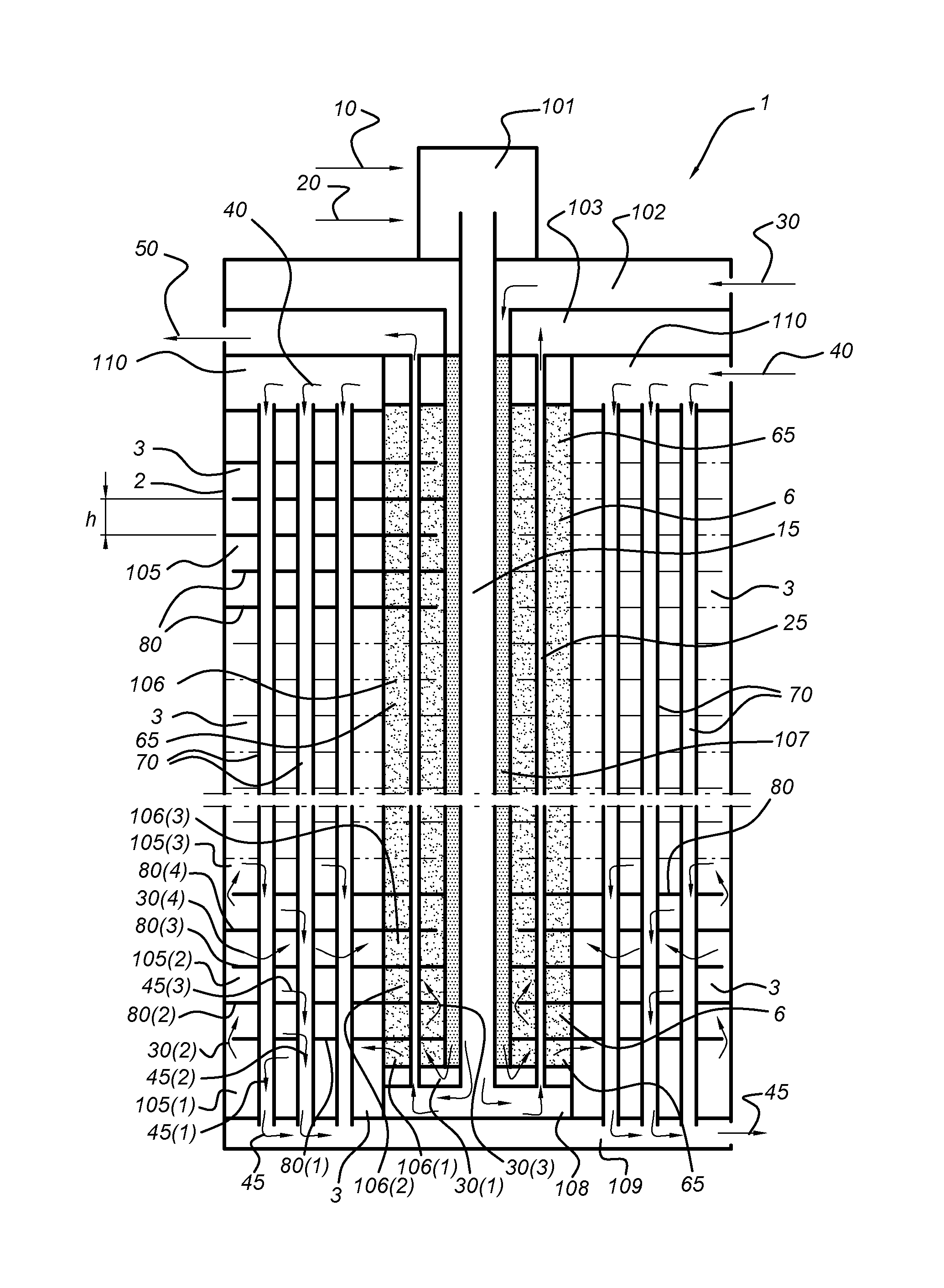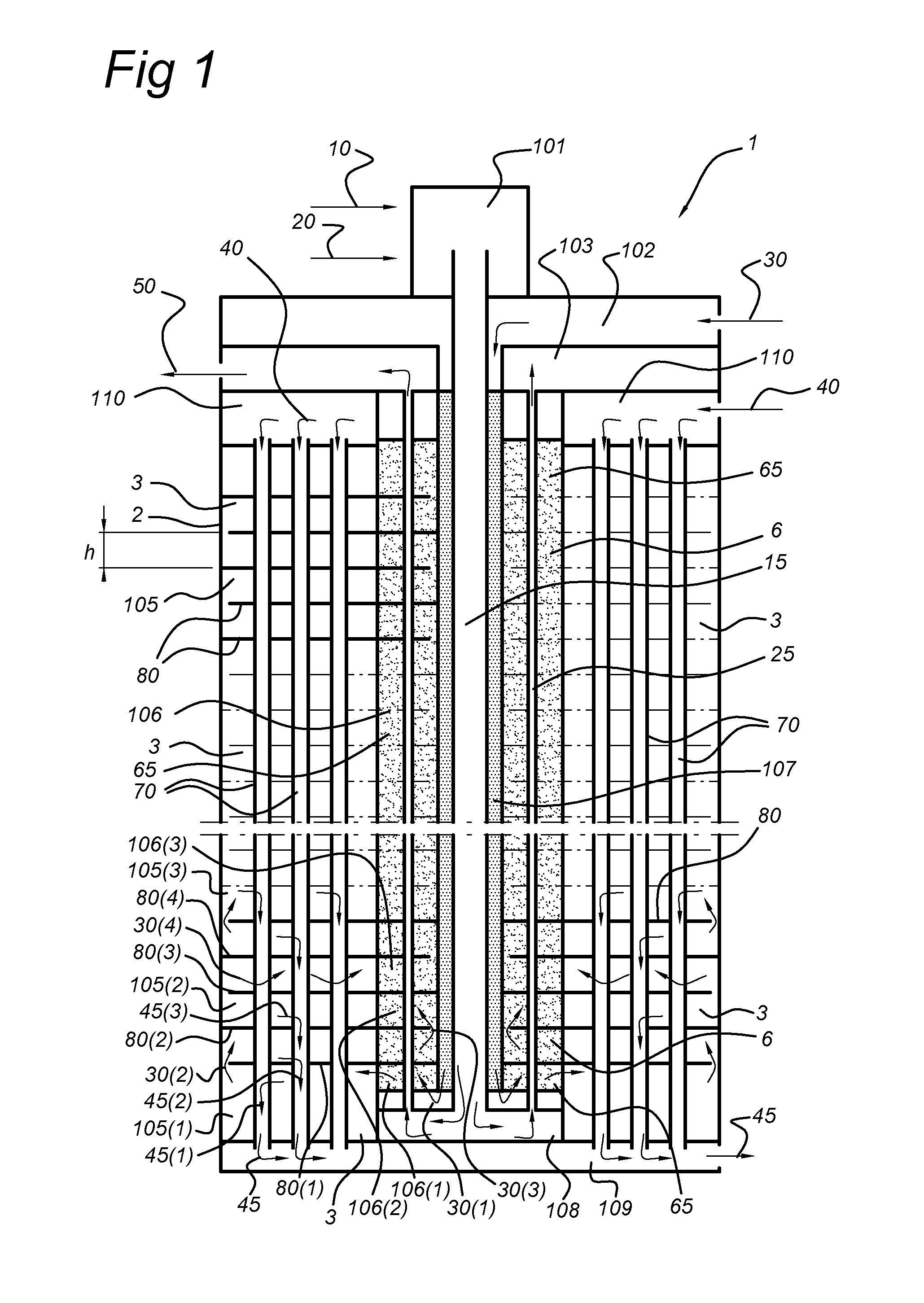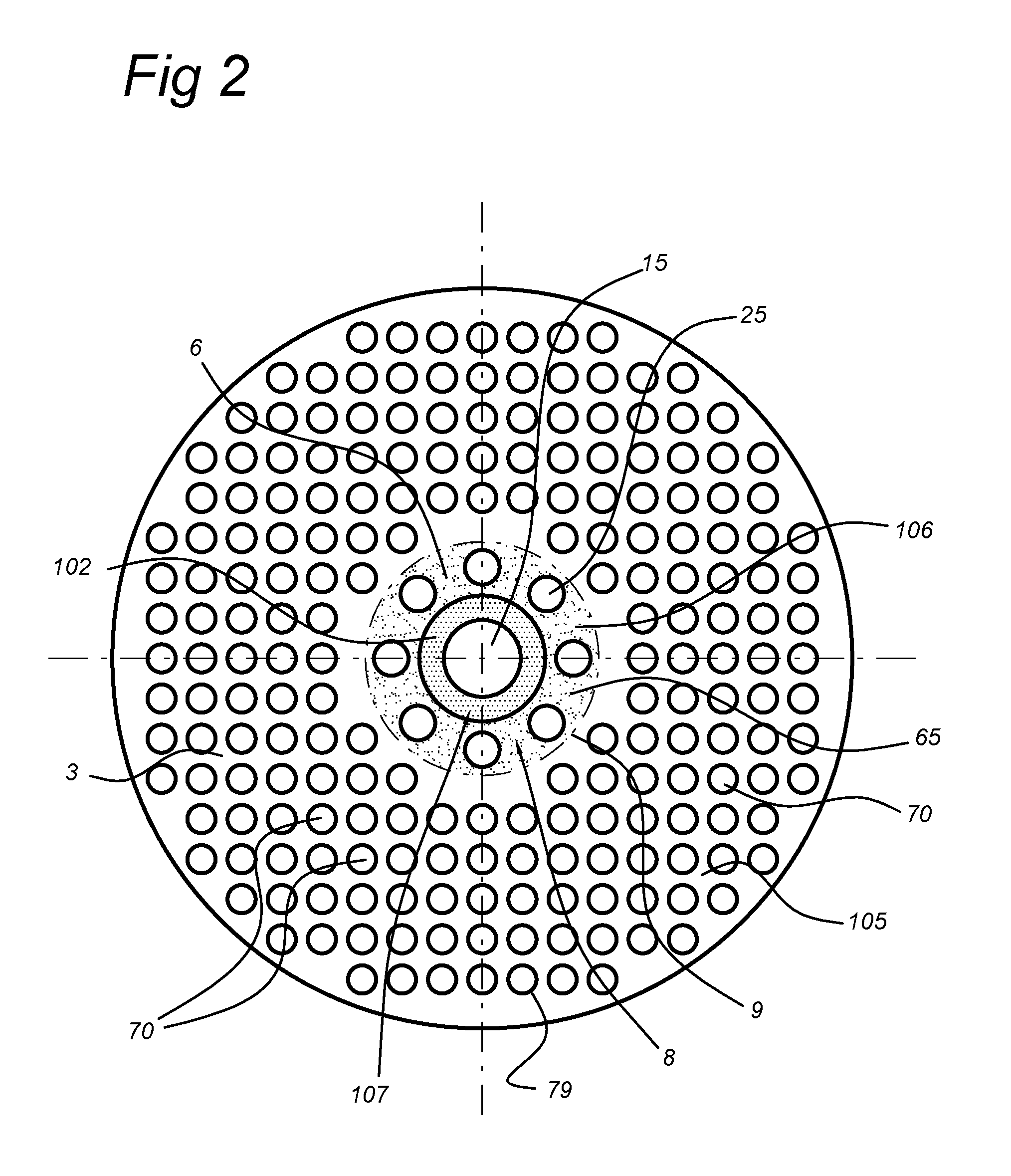Membrane reactor and process for the production of a gaseous product with such reactor
a technology of membrane reactor and gaseous product, which is applied in the direction of chemical/physical/physical-chemical stationary reactors, chemical apparatus and processes, chemical/physical/physical-chemical processes, etc., can solve the problems of economic attractiveness, mismatch between catalyst volume, heat transfer area and membrane area, and inability to select heat exchanging area and membrane area independently, so as to improve heat transfer to the catalyst, improve heat transfer, and improve the effect of heat transfer
- Summary
- Abstract
- Description
- Claims
- Application Information
AI Technical Summary
Benefits of technology
Problems solved by technology
Method used
Image
Examples
example 1
Comparison of Packing Density of Membrane Tubes in the Novel and in a Standard Membrane Reactor
[0093]Calculated: for a membrane section the membrane cross-sectional area / total cross-sectional area [%] and number of membranes per m2. Starting points for novel concept:[0094]Membrane diameter=dm (example membranes typical dm=1.4 cm)[0095]Because of flanges a certain distance between membranes is necessary, and we assume the flange leads to a minimum distance between the membranes f=½ dm (or 1.4 / 2 cm)
[0096]For a triangular arrangement, as shown in FIG. 4a, the ratio between the membrane area and the total area is equal to 23% corresponding to 1500 membranes / m2.
[0097]In the typical tube-in-tube configuration shown in FIG. 4b (reference example), there are membrane / catalyst tubes and burner or heater tubes. The reference dc indicates the thickness of the catalyst layer. In this case a typical arrangement is assumed where every burner is surrounded by 6 membranes and correspondingly each m...
example 2
Calculation of the Velocity in a Membrane Reactor for the Tube-In-Tube Concept (Based on a Steam Methane Reformer Membrane Reactor: CH4+H2O→4H2|CO2)
[0103]In a tube-in-tube configuration, the feed flow is determined by hydrogen flux through the membrane. Theoretically, at 100% conversion for every 4 moles of H2 removed by the membrane, 1 mole of methane needs to be supplied. Typically per mole of methane 2-3 moles of steam are supplied.
[0104]As a typical example we assume:[0105]Membrane diameter=1.4 cm[0106]Cat bed thickness: 5 mm[0107]Catalyst particle size: 1 mm
[0108]Based on an assumed length of catalyst / membrane tube of 6.5 m, the velocity of the gas will be at the feed side inlet will be: 0.2 m / s. For the hydrogen production of 1322 mol / s this will give flux of 553 mol / s. For example, for shorter tubes the velocities will be lower, i.e. if the length of the tube is 3.5 meter the velocity is only 0.02 m / s. As more hydrogen is removed from the mixture along the tube, the velocity ...
example 3
How Many Steps are Required in a Sequential System (Reaction-Separation-Reaction-Separation, etc) to Achieve a High Conversion
[0110]Again we have considered hydrogen production through the steam methane reaction using a membrane reactor. The following starting points have been used:[0111]Hydrogen recovery pressure (permeate pressure=5.5 bar). This is close to the economic optimum (cost required for compression⇄membrane area) determined for a typical industrial hydrogen production system;[0112]The membrane area Amen=5100 m2 for a 100 000 Nm3 / h plant. This has again been determined an economic optimum (compromise between investment cost and conversion).[0113]Operating temperature=650° C. (maximum operating temperature for some of the membranes).
[0114]The base case is the fully integrated tube-in-tube system. For these conditions we find a methane conversion equal to 96% and a hydrogen recovery=95%
H2recov%=H2,permH2,perm+H2,ret·100%
[0115]For the non-integrated design (R-S-R-S-R-S- . ....
PUM
 Login to View More
Login to View More Abstract
Description
Claims
Application Information
 Login to View More
Login to View More - R&D
- Intellectual Property
- Life Sciences
- Materials
- Tech Scout
- Unparalleled Data Quality
- Higher Quality Content
- 60% Fewer Hallucinations
Browse by: Latest US Patents, China's latest patents, Technical Efficacy Thesaurus, Application Domain, Technology Topic, Popular Technical Reports.
© 2025 PatSnap. All rights reserved.Legal|Privacy policy|Modern Slavery Act Transparency Statement|Sitemap|About US| Contact US: help@patsnap.com



